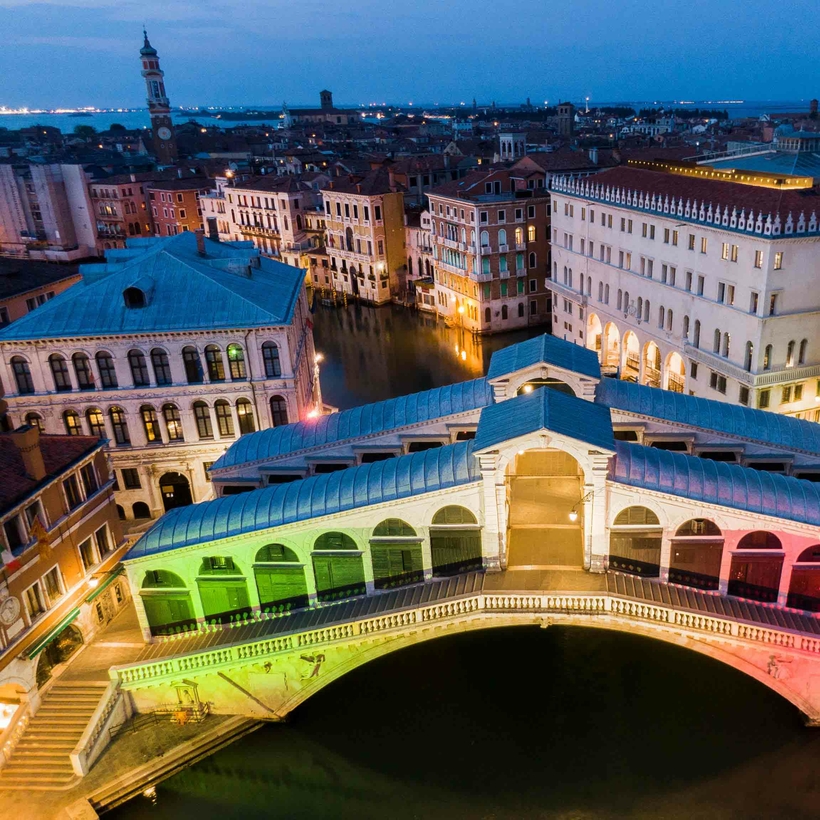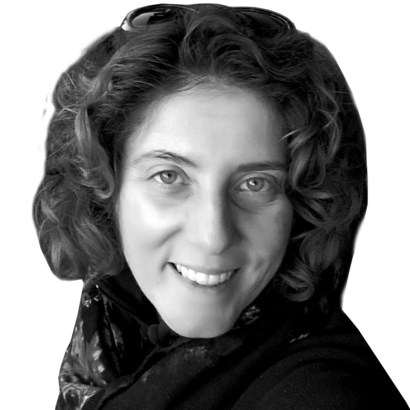At nine in the morning in the Rialto market, in Venice, all one can hear are Venetians shopping for freshly caught fish, seagulls spiraling above the old arches, church bells ringing, and a few boats passing through the Grand Canal. I came here from Milan after three months of lockdown, initially planning to spend 15 days in a rental apartment with a home office and a terrace overlooking the rooftops near the Frari. The idea was to take advantage of a novel opportunity to enjoy Venice as its residents once did, without sharing it with the rest of the world.
Missing Persons
In pandemic-free years, around 20 million tourists walk the city’s calli and campi, most of them from abroad; there are usually far too many day-trippers disgorging from the giant cruise ships that dwarf the harbor. These travelers sustain the economy, but they also increase costs and stress on the city, which has led Venice, known as La Serenissima, to become a symbol of over-tourism at its worst.
“Even for Italians, it’s hard to visit Venice in such conditions,” an employee at La Scuola Grande di San Rocco told me. “When the lockdown ended, the first visitors we had were Veneti, people from our same region.” The building, a former confraternity that famously commissioned Tintoretto to create dozens of paintings for its walls, had reopened to the public only that morning. Masked, and with freshly sanitized hands, I had the privilege of enjoying the masterpieces almost alone.

The Veneto region was one of the first in Italy to be hit by the coronavirus, but it was also one of the first to emerge from lockdown. Now, in mid-June, after two consecutive weeks of virtually no new coronavirus cases and zero deaths, many people feel quite confident and relaxed.
At Osteria ai Pugni, my neighborhood bacaro in Fondamenta Gherardini, a group of locals gathers every evening around six o’clock for a cicchetto and a glass of wine. “Despite the need for tourism income, and the loss of jobs for those working in that industry, we can’t help but enjoy the momentum,” said Giorgio De Battisti, a Venetian contemporary-art-events organizer.
Masks are not required outdoors, although they must be worn in indoor spaces, such as museums and on the vaporetti. Hand sanitizer is everywhere, and so are the signs explaining basic coronavirus protocols, which all are requested to follow.
At the entrance to the newly reopened Palazzo Ducale, lines of visitors who booked online wait patiently to have their temperatures checked. The Sala del Maggior Consiglio, one of the greatest halls in Europe and located at the Palazzo Ducale, is vast enough to provide all the social distancing one would ever need. The proposition is a little trickier at the Peggy Guggenheim Collection, where tickets for specific time slots must be purchased in advance, and only 70 guests are allowed in at a time.
Re-discovering Tradition
The alternative environment that Venetians have enjoyed over the past few months has re-ignited their appetite for a more sustainable way of life. Ten years ago, vintner and restaurateur Matteo Bisol’s father, Gianluca, purchased the old vineyards of Dorona, on the northern lagoon’s small island of Mazzorbo. Today, the family’s Venissa wine is one of the great Italian whites. “Now the desire is to work harder to enhance the lagoon, a unique eco-system that must be preserved,” says Matteo Bisol. “We do it with the production of wine, with hospitality, and, obviously, with our restaurant.”
If tradition and sustainability are among the requirements for the survival of Venice, the re-discovery of voga alla Veneta, a way of rowing used by gondoliers, might be part of this process. “Many people, especially locals, are asking us to take lessons,” says Alessandro Gatto, a Venetian trainer for the Reale Società Canottieri Bucintoro, a 138-year-old sporting organization. “Some used to row as kids with their granddads, but then forgot.” Crossing the Canale della Giudecca with Gatto, on the board of an old sàndolo boat, made me feel like a true Venetian—at least for one day.
Alessandra Gesuelli is a writer based in Milan


